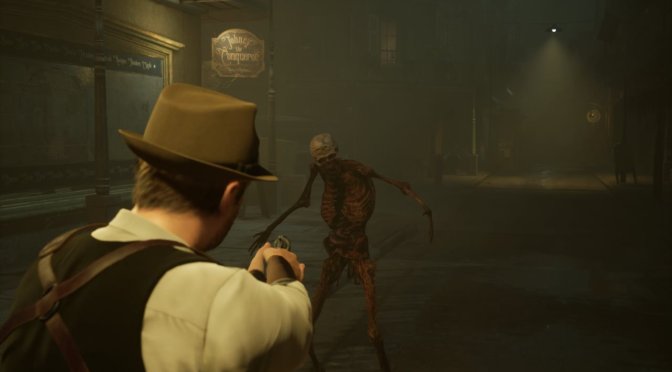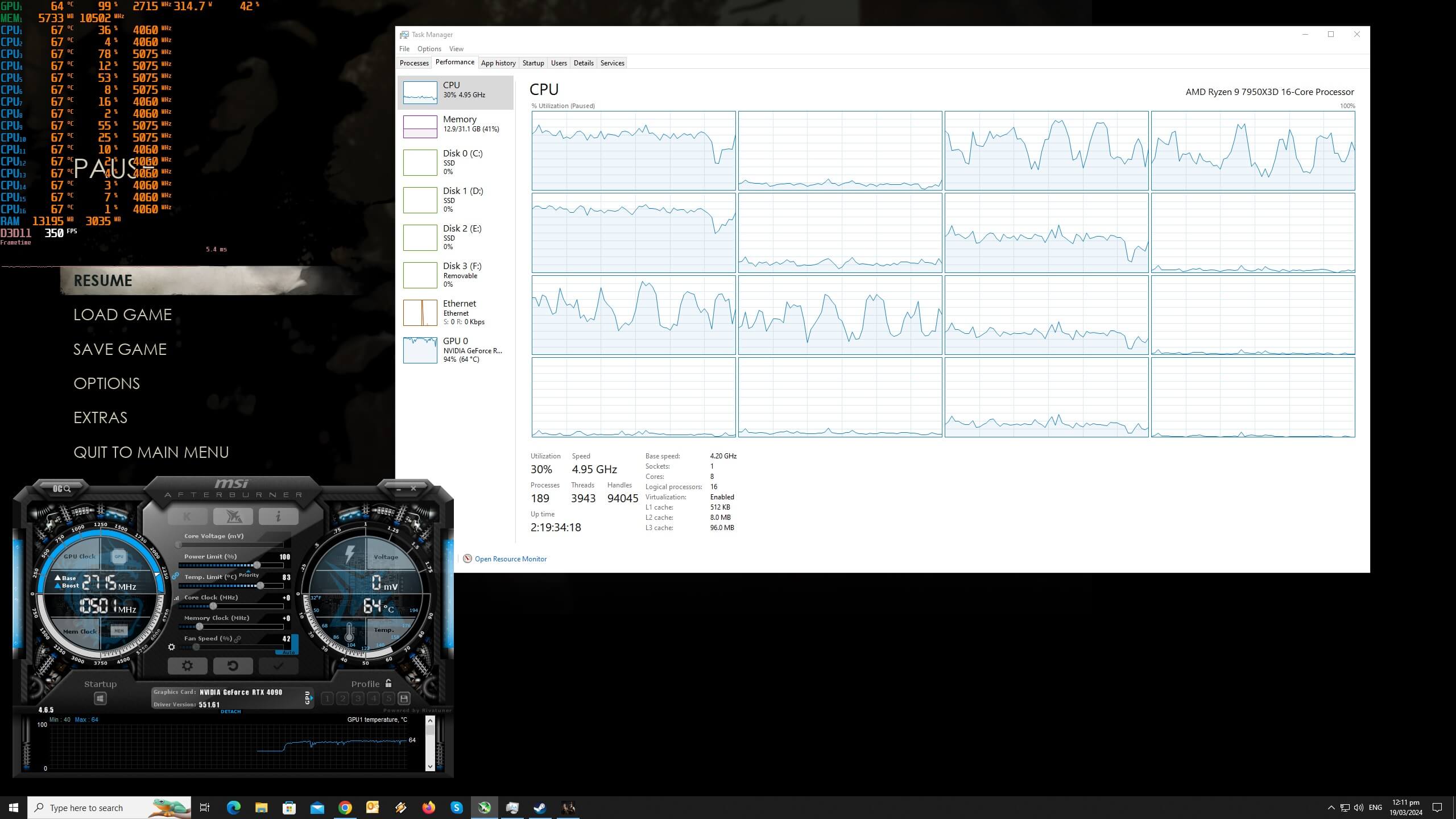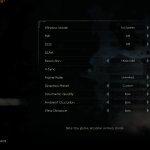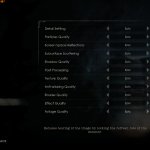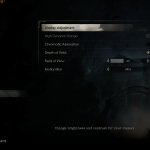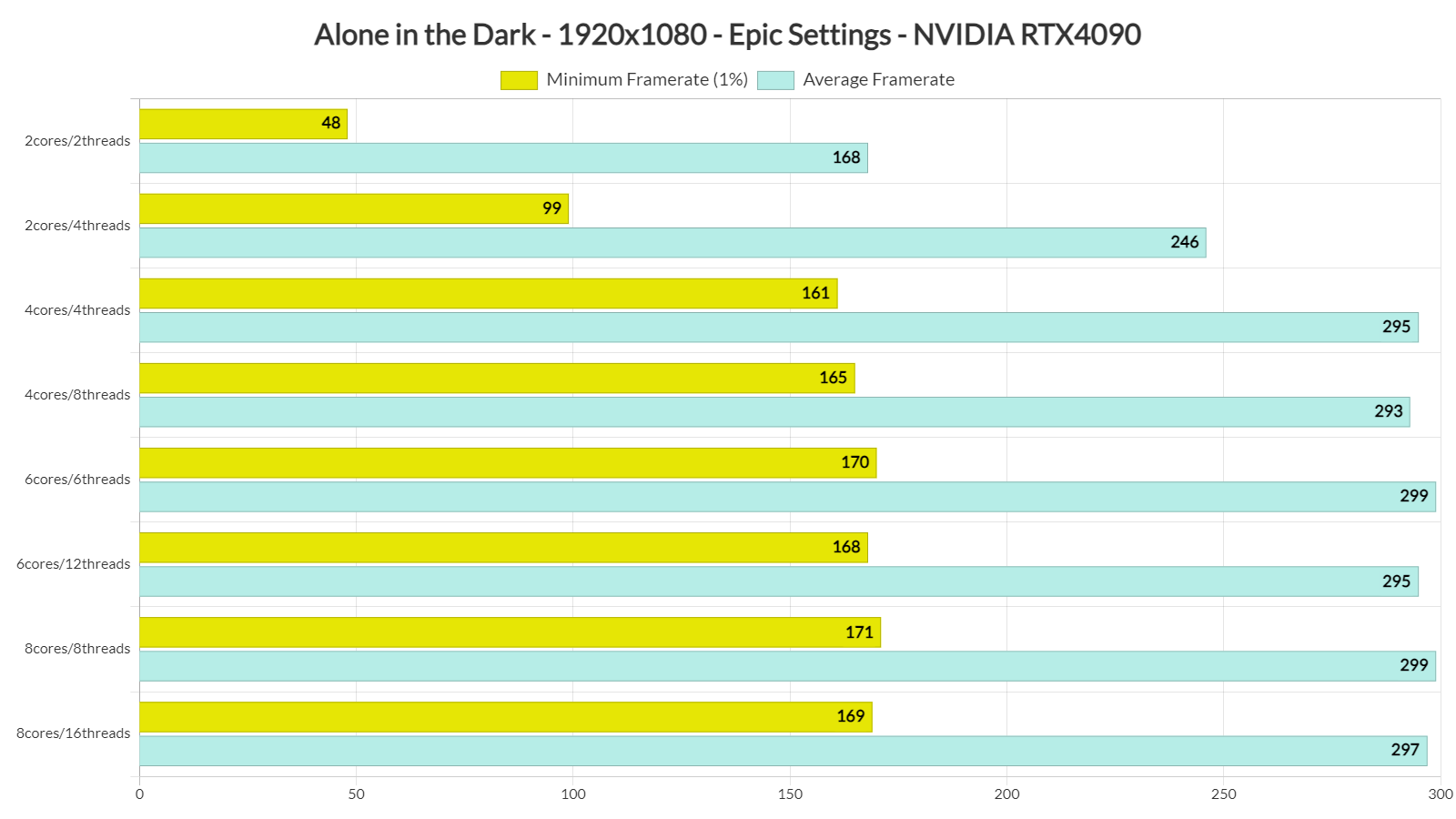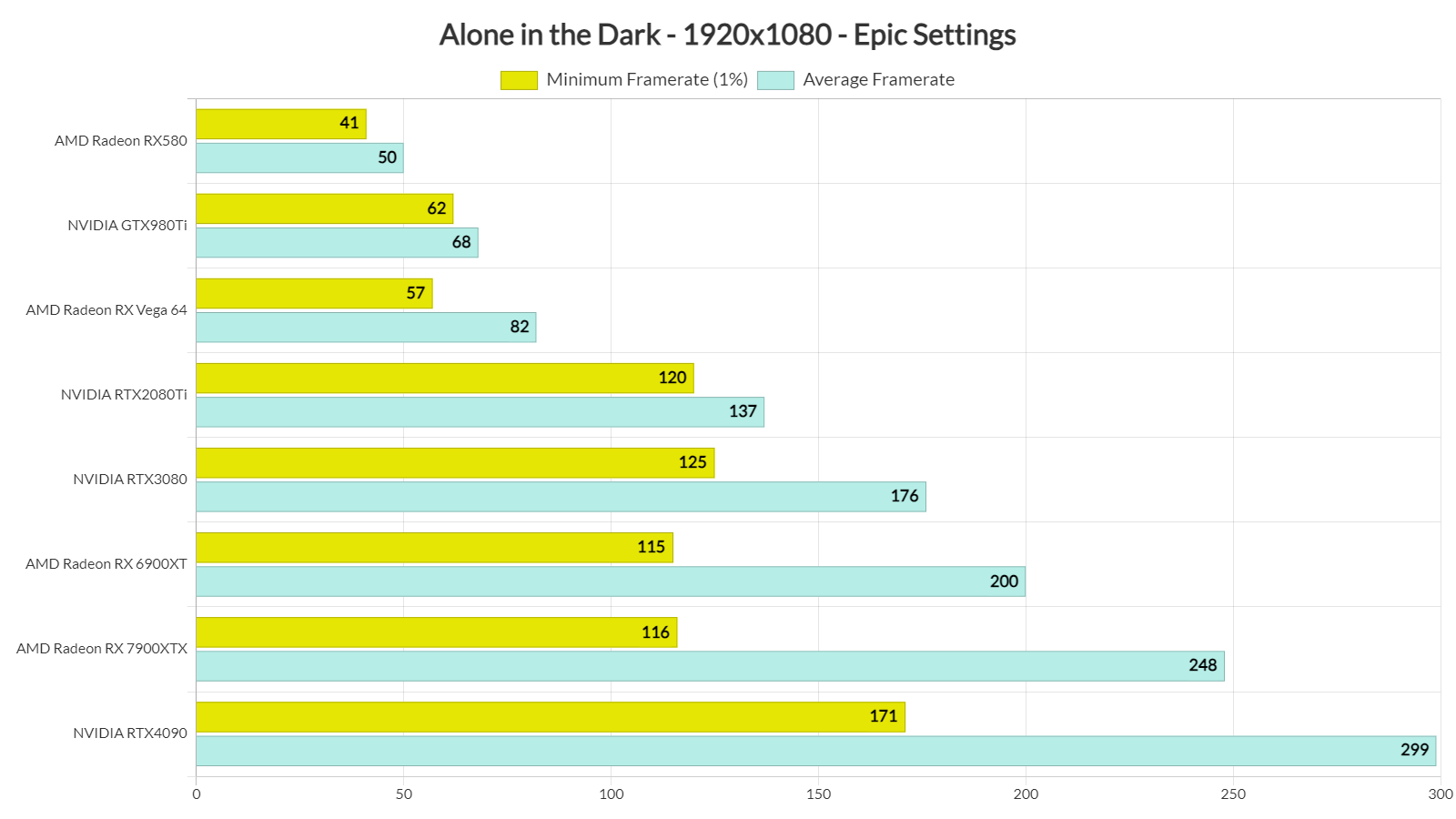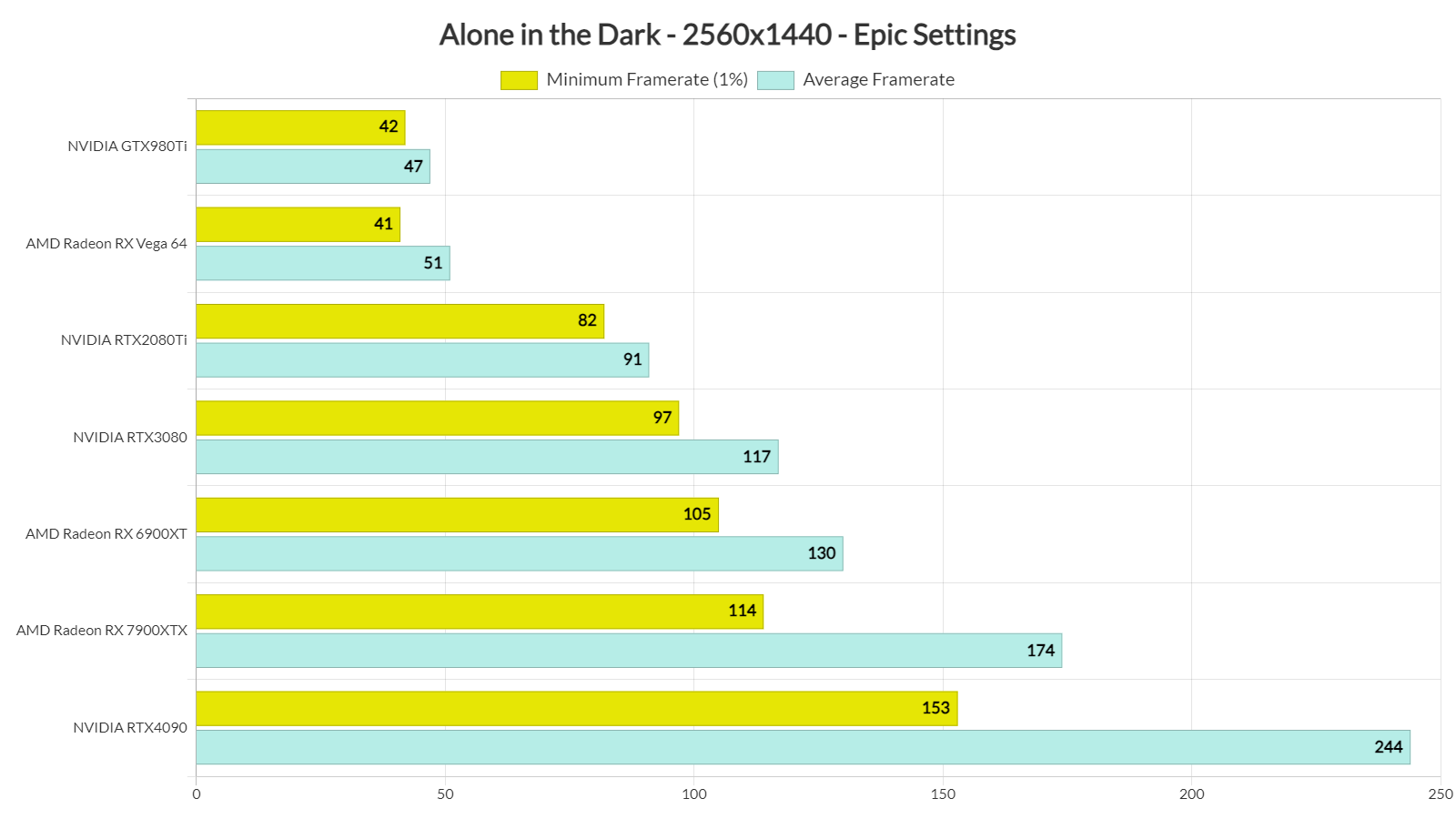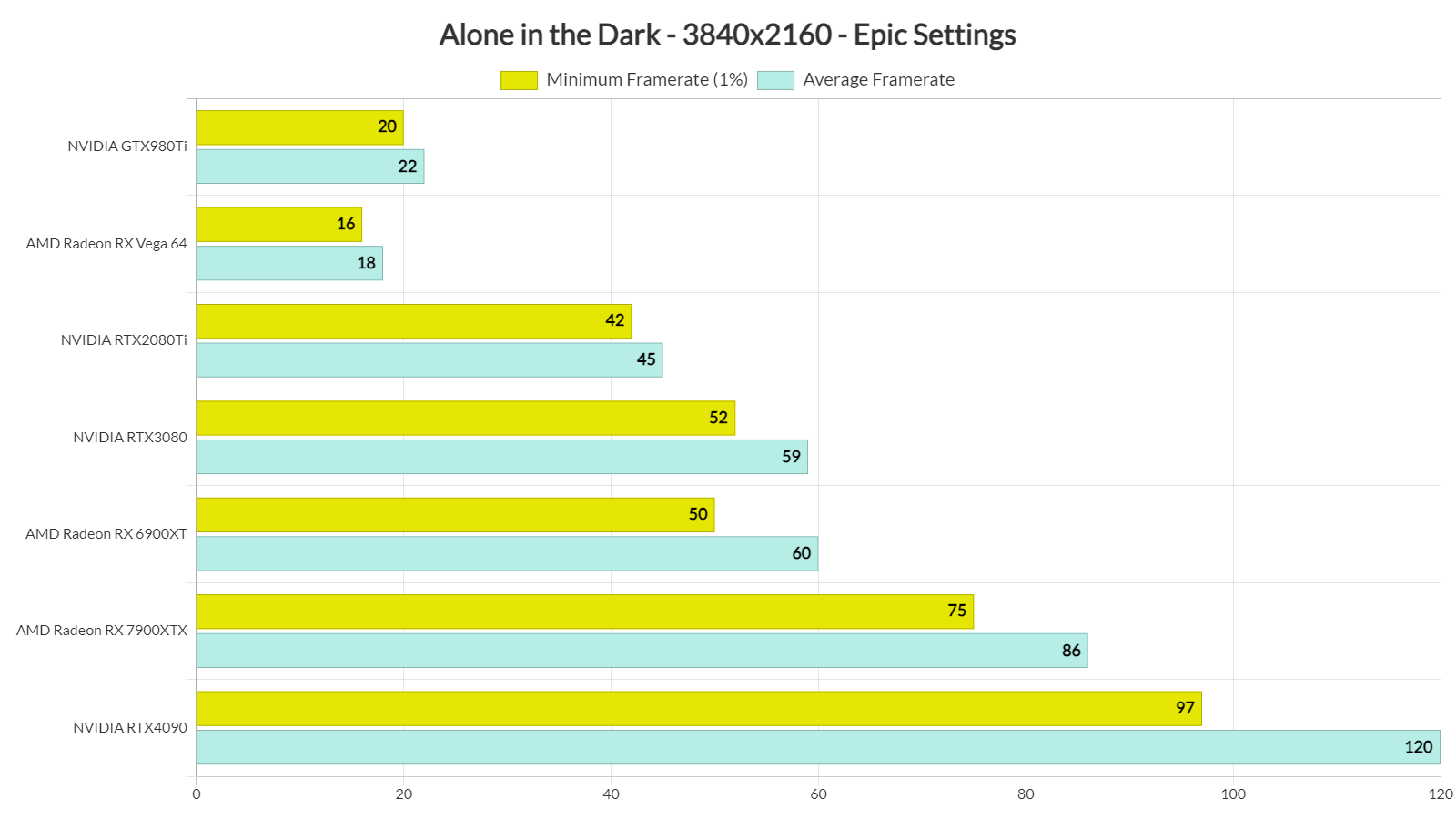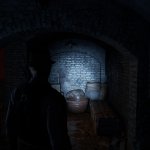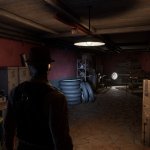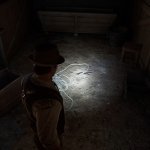THQ Nordic has just lifted the review embargo for Alone in the Dark. Powered by Unreal Engine 4.27.2.0, it’s time to benchmark it and examine its performance on the PC platform.
For our benchmarks, we used an AMD Ryzen 9 7950X3D, 32GB of DDR5 at 6000Mhz, AMD’s Radeon RX580, RX Vega 64, RX 6900XT, RX 7900XTX, NVIDIA’s GTX980Ti, RTX 2080Ti, RTX 3080 and RTX 4090. We also used Windows 10 64-bit, the GeForce 551.61, and the Radeon Adrenalin Edition 24.2.1 drivers. Moreover, we’ve disabled the second CCD on our 7950X3D.
Pieces Interactive has included a respectable amount of graphics settings. PC gamers can adjust the quality of Volumetrics, Ambient Occlusion, View Distance, Textures, Shadows and more. The game also a FOV slider, as well as options for Chromatic Aberration, Motion Blur and DOF. There is also support for DLSS 2 and FSR 2.0.
Alone in the Dark does not feature any built-in benchmark tool. So, for our tests, we benchmarked the following area. This appeared to be a demanding scene (at least in the early parts of the game).
To see how the game runs with different types of CPUs, we simulated dual-core, quad-core, and hexa-core CPUs. And from what we could see, the game does not require a high-end CPU. Our simulated dual-core system was able to get an average of over 120fps, even without Hyper-Threading/SMT. However, Alone in the Dark suffers from MAJOR traversal stutters. These stutters are easily noticeable and can drop performance by almost 100fps when gaming at high framerates. They are really annoying and awful, and it’s something that the devs will have to somehow resolve. We’ve already informed them (these stutters are present with the day-1 patch), so here is hoping that they’ll do something about them via a post-launch update. And yes, there are also shader compilation stutters.
At 1080p/Epic Settings, you don’t really need a high-end GPU to get a 60fps experience. Again, though, your gaming experience will be ruined by the traversal stutters. For instance, the AMD Radeon RX Vega 64 can push an average of 82fps, but it can drop to below 60fps due to these stutters.
At 1440p/Epic Settings, our top five GPUs were able to provide high framerates. As for Native 4K/Epic Settings, our AMD Radeon RX 7900XTX and NVIDIA GeForce RTX 4090 were able to provide framerates higher than 60fps at all times.
Graphics-wise, Alone in the Dark looks a bit average. The environments look OK, but there is very limited environmental interactivity. I could also spot numerous pop-in issues, even on Epic Settings. The character models are also serviceable. The only thing that really stood out was the fact that your flashlight can cast dynamic shadows. This is a nice touch, and it can enhance the game’s presentation. Other than that, though, there is nothing worth mentioning. Oh, and before closing. The game’s Motion Blur can introduce visual artifacts, even in its Ultra setting. I’ve showcased this in the video above. So, make sure to disable it.
All in all, Alone in the Dark does not require a high-end PC system. However, the game suffers from major traversal stutters, as well as shader compilation stutters. These stutters can completely destroy your gaming experience. Seriously, they are THAT bad in this title. So, let’s hope that the devs will do something about them!

John is the founder and Editor in Chief at DSOGaming. He is a PC gaming fan and highly supports the modding and indie communities. Before creating DSOGaming, John worked on numerous gaming websites. While he is a die-hard PC gamer, his gaming roots can be found on consoles. John loved – and still does – the 16-bit consoles, and considers SNES to be one of the best consoles. Still, the PC platform won him over consoles. That was mainly due to 3DFX and its iconic dedicated 3D accelerator graphics card, Voodoo 2. John has also written a higher degree thesis on the “The Evolution of PC graphics cards.”
Contact: Email

